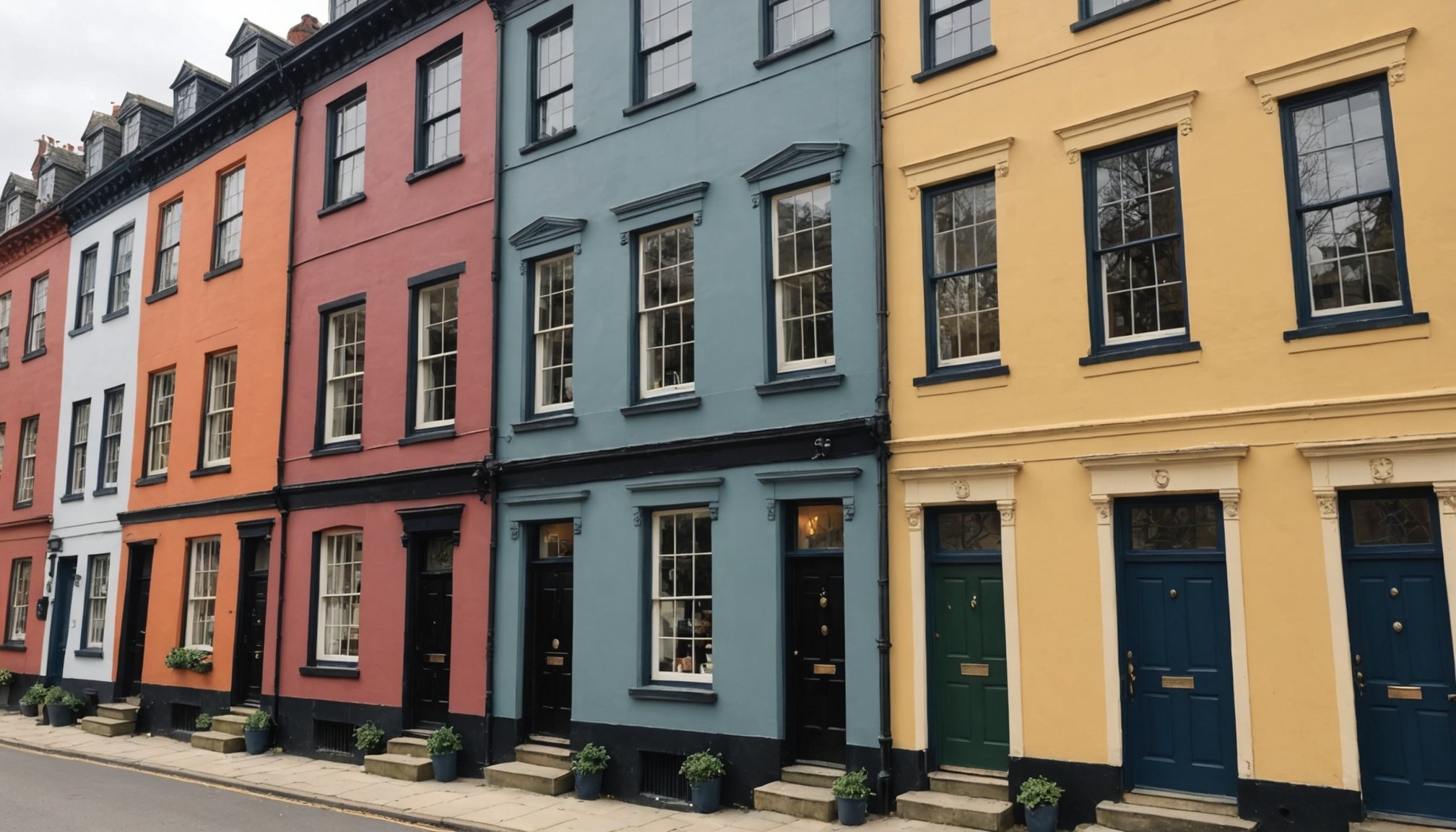Importance of Historical Paint Colors in Restoration
Historical paint colors hold immense significance in the architectural restoration of properties like Shrewsbury townhouses. These colors offer a glimpse into the past, preserving not just the aesthetic but also the cultural essence of an era. Selecting appropriate historical paint colors contributes to maintaining the architectural integrity and authenticity of a building. For a Shrewsbury townhouse, the chosen hues are more than mere decoration; they reflect the property’s history and grandeur.
The use of historical palettes plays a pivotal role in safeguarding cultural heritage by enhancing the visual appeal while maintaining historical accuracy. Authentic color schemes can transform a restoration project by aligning the property’s façade with its original design, thus celebrating its historical narrative. This thoughtful attention to detail in color selection helps convey a period-appropriate atmosphere and emphasizes the significance of the building within its historical context.
Also read : Transform your east anglia front yard into a beautiful, low-maintenance oasis with drought-resistant plants
In essence, the integration of historical paint colors underscores the importance of preserving historical accuracy in restoration projects. By embracing historical color palettes, restorers can ensure that Shrewsbury townhouses retain not just their beauty but also their cultural significance in the modern landscape.
Selecting Appropriate Historical Paint Colors
When embarking on a Shrewsbury townhouse restoration, color selection is pivotal. Identifying suitable historical paint color palettes requires an understanding of the architectural style and period features of the building. This ensures that the property’s aesthetic and historical significance remain intact.
Also read : Elevate your compact edinburgh flat: the ultimate handbook for designing a chic minimalist home office
To select appropriate colors, consider the architectural details and historical context of the townhouse. Examining the building’s original features can provide insights into its authentic color schemes. For Shrewsbury properties, this may involve studying historical precedents and existing period features like mouldings or decorative elements.
When researching historical precedents, one practical method is exploring archives or conducting paint analysis. These steps can help in discovering the true hues that once adorned the structure. Engaging with local historical societies or experts in architectural restoration can also aid in accurate color selection.
Incorporating the right shades not only enhances the authenticity of the restoration but also preserves the cultural heritage associated with the Shrewsbury townhouse. By choosing the correct historical color palettes, restorers can celebrate the building’s past, ensuring it continues to enrich the architectural tapestry of its environment.
Step-by-Step Restoration Guide
Restoration projects can seem daunting, but a methodical approach simplifies the process.
Preparing Your Space
Preparation is critical in any restoration project, especially when it involves the rich history of a Shrewsbury townhouse. Begin by assessing the current paint conditions, noting any chipping or wear. Proper surface preparation techniques, such as sanding and priming, ensure a smooth application later. Collect necessary tools and materials, including brushes, rollers, and drop cloths, to facilitate an efficient workflow.
Choosing the Right Paint Types
Choosing the appropriate paint type is essential for authenticity and durability. Options like oil-based paints offer a traditional finish, though latex paints are increasingly popular for eco-friendliness and ease of use. Experts often recommend specific brands known for their historical shades, considering both advantages like longevity and any potential disadvantages, such as finish variability.
Application Techniques for Authentic Results
Emulating historical painting techniques requires precision. Employ brushstrokes that mirror period-specific styles and focus on detailing to accentuate architectural features. The best practice for layering involves applying thin coats to prevent drips and ensure even coverage. Avoid common pitfalls such as over-application or neglecting drying times, which compromise the final appearance.
Successful Restoration Examples
Examining successful Shrewsbury townhouse restorations provides insight into the power of historical paint colors. Notable case studies demonstrate how meticulously selected palettes transform properties, aligning them with their historical identity. One remarkable project involved a Georgian townhouse, where experts employed authentic late 18th-century colors. This choice not only revitalized its structure but restored its grandeur, confirming the impactful role of these hues.
In another instance, a Victorian-era townhouse adopted carefully researched historical shades, emphasizing ornamental details and returning its façade’s original vibrancy. The chosen color palettes here enhanced not only the aesthetics but also the building’s cultural significance, echoing the opulent spirit of its time. Homeowners involved in such restorations frequently praise the role of historical paint colors in reviving their homes’ legacy, with testimonials reflecting pride and satisfaction.
These examples underscore practical techniques employed by restorers: rigorous research, collaboration with historians, and precise application methods. By showcasing authentic restoration projects, one gains a better understanding of how historical paint colors contribute to the authenticity and enduring charm of Shrewsbury townhouses, making these efforts an inspiration for future restoration enthusiasts.
Additional Resources for Restoration Enthusiasts
Venturing into the realm of historical paint colors and Shrewsbury townhouse restoration can be simplified with the right resources. Enthusiasts should delve into recommended books and guides that offer insight into restoration techniques and accurate color selections. Texts like “The Anatomy of Colour: The Story of Heritage Paints & Pigments” provide rich historical context and practical advice.
Online resources can further enhance your knowledge. Engaging with digital platforms such as forums dedicated to historical architecture can connect you with a community of restoration aficionados sharing experiences and tips. Websites featuring expert-led tutorials present visual learners with step-by-step guidance.
For hands-on learning, participating in workshops hosted by local preservation organizations is invaluable. Workshops focusing on Shrewsbury architecture offer an authentic, immersive experience. These events allow enthusiasts to gain practical skills under expert supervision.
Rediscovering the allure of historical colors does not stop at personal research. By tapping into these resources, restoration enthusiasts can ensure their projects are authentic and enriching, beautifully preserving the cultural tapestry of Shrewsbury townhouses. Engaging with these materials elevates the restoration experience, making it both educational and deeply rewarding.











